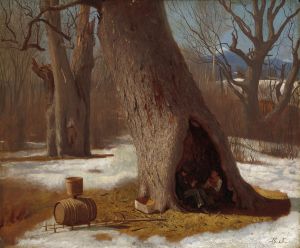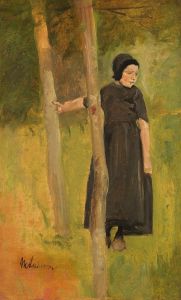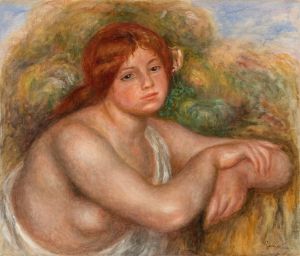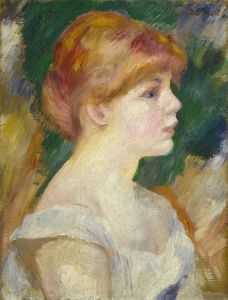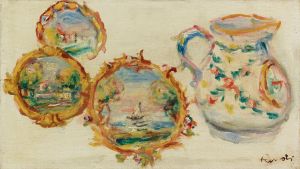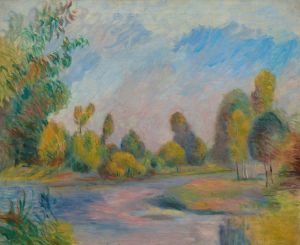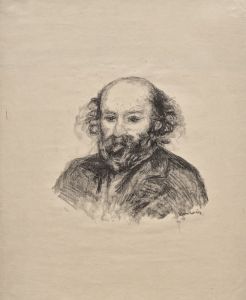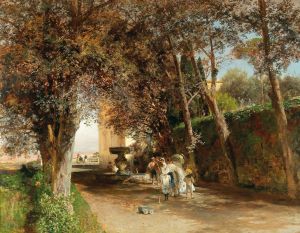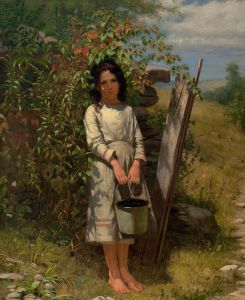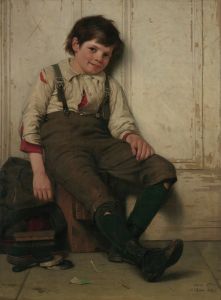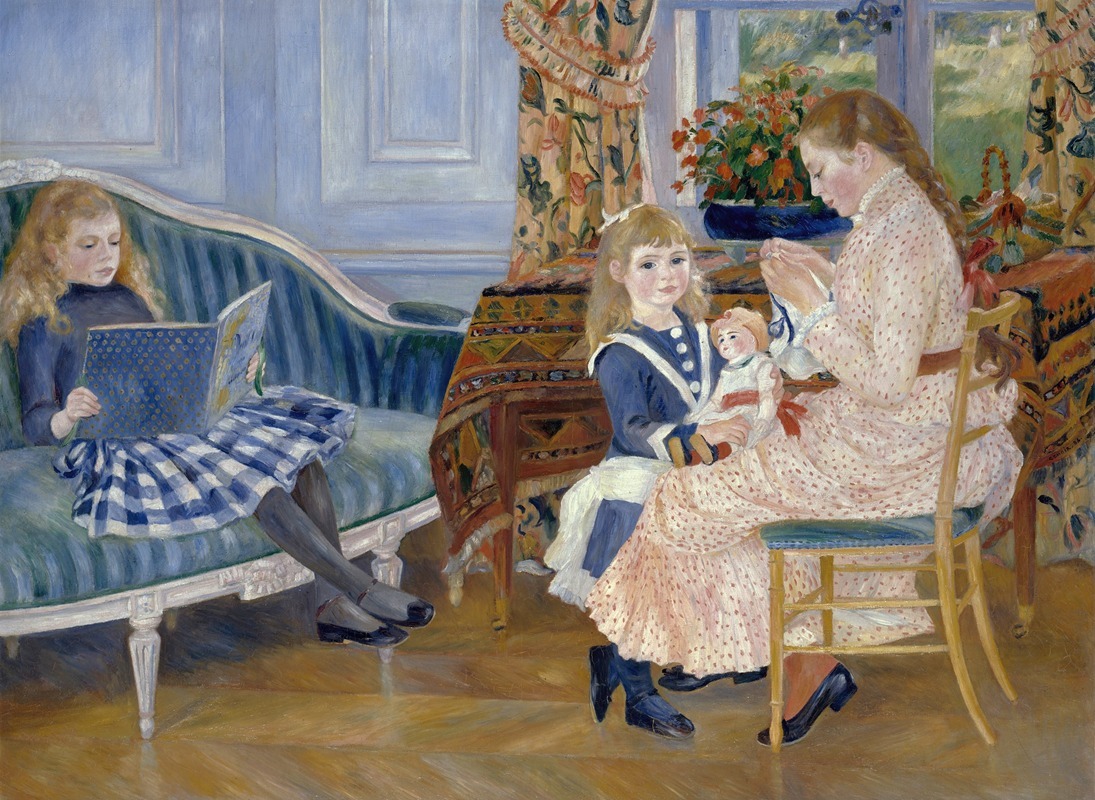
Children’s Afternoon at Wargemont
A hand-painted replica of Pierre-Auguste Renoir’s masterpiece Children’s Afternoon at Wargemont, meticulously crafted by professional artists to capture the true essence of the original. Each piece is created with museum-quality canvas and rare mineral pigments, carefully painted by experienced artists with delicate brushstrokes and rich, layered colors to perfectly recreate the texture of the original artwork. Unlike machine-printed reproductions, this hand-painted version brings the painting to life, infused with the artist’s emotions and skill in every stroke. Whether for personal collection or home decoration, it instantly elevates the artistic atmosphere of any space.
"Children’s Afternoon at Wargemont" is an oil painting created by the renowned French artist Pierre-Auguste Renoir in 1884. Renoir, a leading figure in the Impressionist movement, is celebrated for his vibrant light and saturated color, often focusing on people in intimate and candid compositions. This particular painting exemplifies his interest in capturing the leisurely activities and innocence of childhood, a recurring theme in his work.
The painting depicts a serene scene set in the garden of the Château de Wargemont, located in the Normandy region of France. This location was the home of Paul Berard, a banker and one of Renoir's most significant patrons. Renoir spent several summers at Wargemont, where he painted numerous works featuring Berard's family. "Children’s Afternoon at Wargemont" includes the Berard children, who were frequent subjects in Renoir's paintings during this period.
In "Children’s Afternoon at Wargemont," Renoir captures a group of children engaged in leisurely activities in the lush garden. The composition is characterized by its soft brushwork and the interplay of light and shadow, which are hallmarks of Renoir's style. The painting reflects the Impressionist interest in capturing fleeting moments and the effects of light on the natural environment. The children are depicted in a relaxed and natural manner, embodying the carefree spirit of youth.
Renoir's use of color in this painting is particularly noteworthy. He employs a palette of soft pastels and vibrant hues to convey the warmth and tranquility of a summer afternoon. The dappled sunlight filtering through the trees creates a dynamic pattern of light and shadow across the scene, enhancing the sense of movement and life. This technique demonstrates Renoir's mastery in rendering the effects of natural light, a central concern of the Impressionist movement.
The painting is also significant for its composition. Renoir arranges the figures in a harmonious manner, guiding the viewer's eye through the scene. The informal grouping of the children and the natural setting contribute to the painting's sense of spontaneity and intimacy. This approach reflects Renoir's desire to capture the essence of a moment, a key objective of the Impressionist artists.
"Children’s Afternoon at Wargemont" is housed in the Musée de l'Orangerie in Paris, which is home to an extensive collection of Impressionist and Post-Impressionist masterpieces. The painting is an excellent example of Renoir's ability to blend portraiture with landscape, creating a work that is both a depiction of individual personalities and a study of the natural world.
Overall, "Children’s Afternoon at Wargemont" is a testament to Renoir's skill in capturing the beauty and simplicity of everyday life. Through his use of color, light, and composition, Renoir creates a scene that is both idyllic and timeless, inviting viewers to appreciate the joys of childhood and the natural world. The painting remains a beloved example of Impressionist art, celebrated for its warmth, charm, and technical brilliance.







